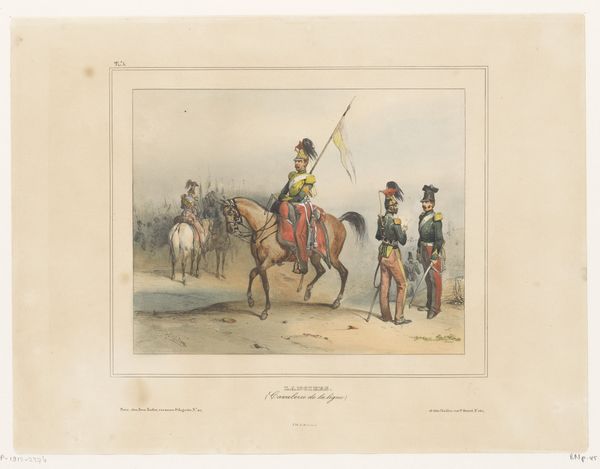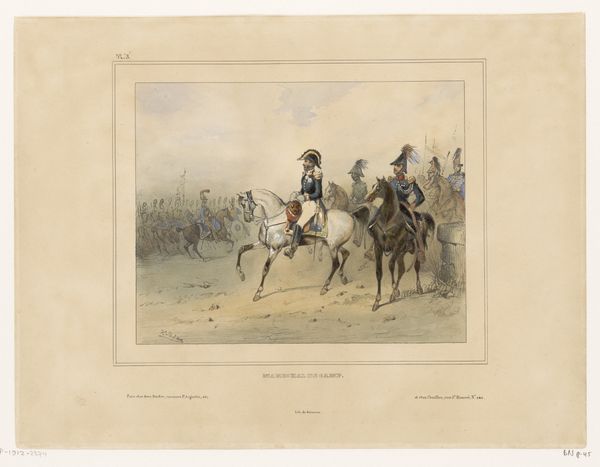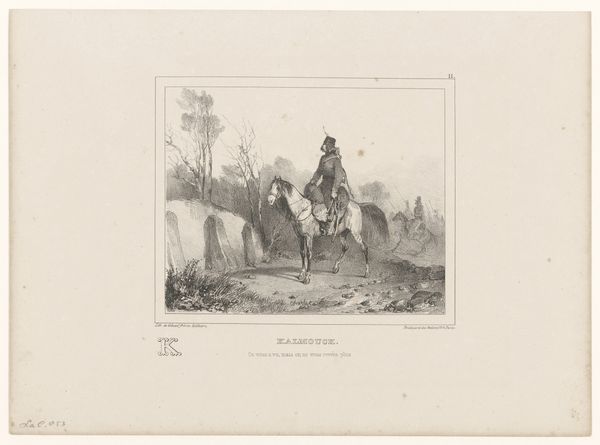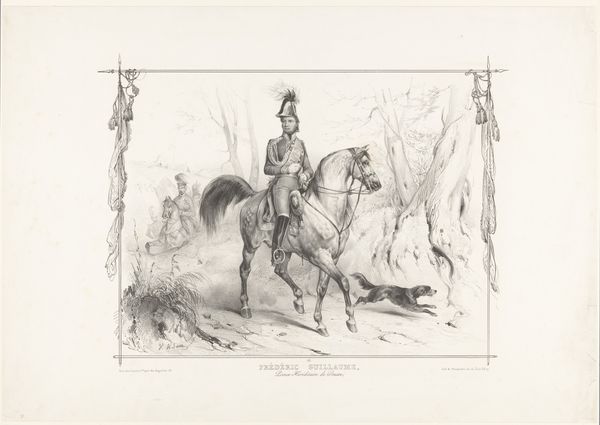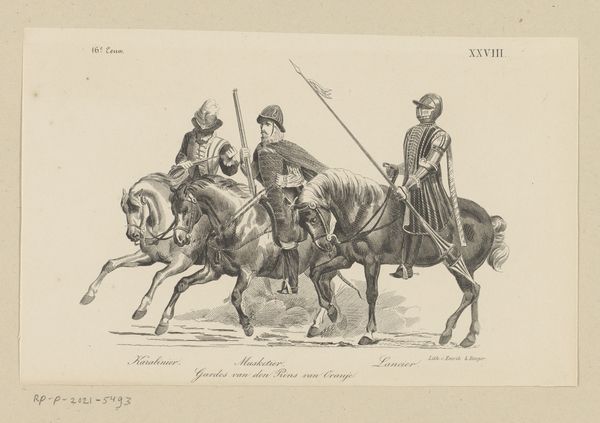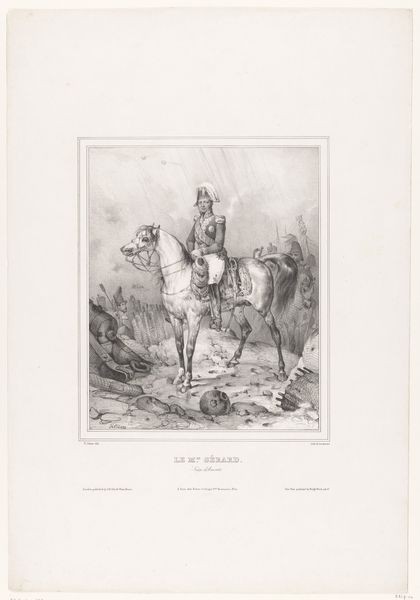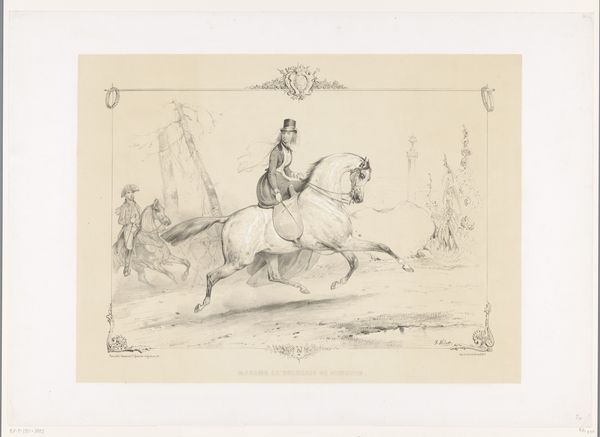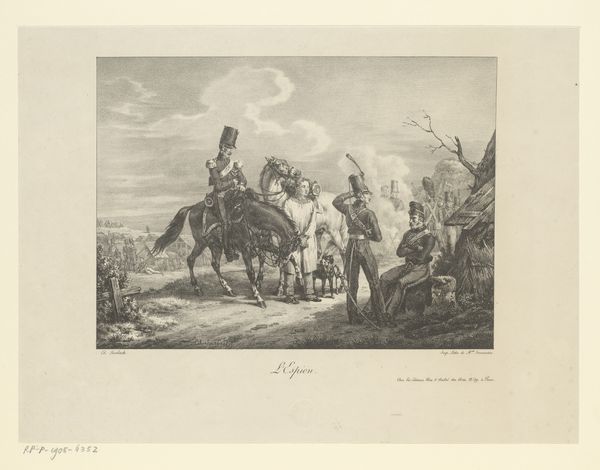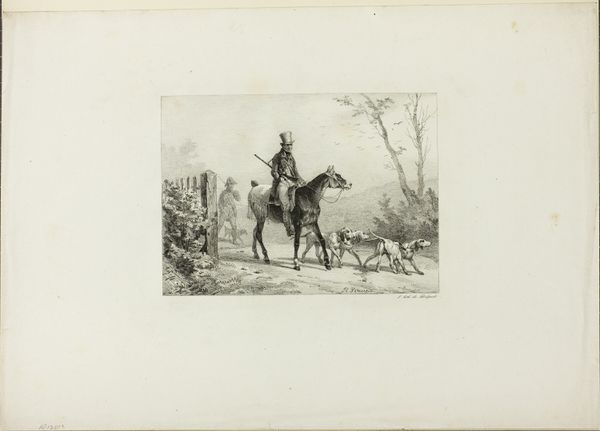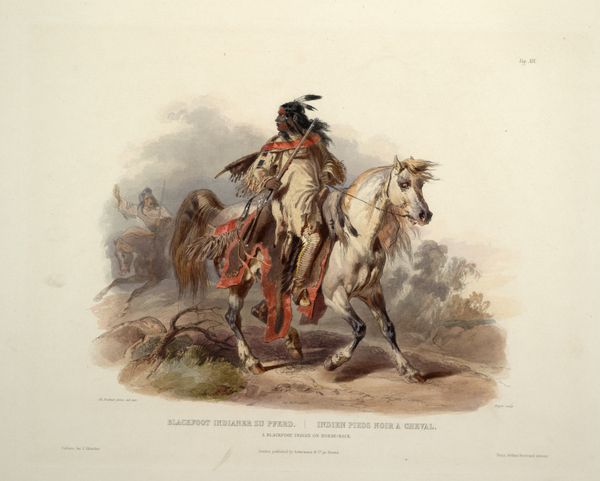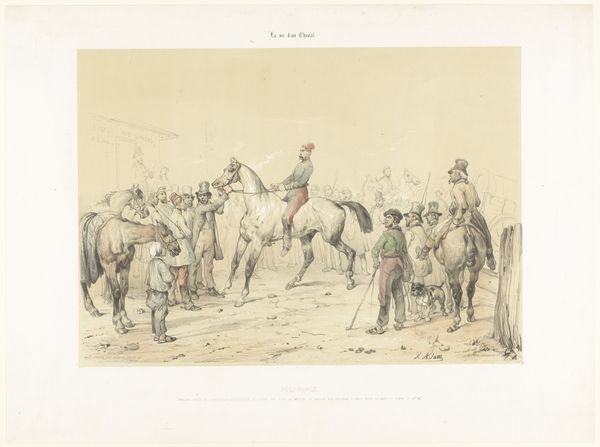
drawing, watercolor
#
drawing
#
landscape
#
figuration
#
watercolor
#
romanticism
#
watercolour illustration
#
history-painting
#
watercolor
Dimensions: height 228 mm, width 305 mm
Copyright: Rijks Museum: Open Domain
Curator: Immediately, I’m struck by the romantic drama of it all—a sweeping landscape inhabited by these stoic figures on horseback. It’s a little… staged, perhaps? Editor: That theatricality is characteristic of Romanticism. We're looking at "Generaal-majoor", or General Major, a watercolor and ink drawing crafted between 1833 and 1834 by Victor Adam, currently held at the Rijksmuseum. The work's cool detachment really allows one to see Romanticism leaning away from Revolution's fervor. Curator: The term "general major" has its own resonance as well, a kind of middle rank reflecting its place in artistic evolution too. Look how firmly this person sits in his authority, not quite in power yet clearly comfortable being on its way up. And is it me, or does his horse look rather unimpressed? Editor: The horse seems far more a tool than companion, a recurring military emblem for prowess. Consider the stark contrast to folk mythologies—where animal counterparts embody wild freedom, the general tames even the landscape. The horizon's bleached palette adds gravity to it all; somber and austere with every calculated stroke. Curator: That sense of "tamed" resonates. Notice also how even though these figures have horses and arms, they seem to move against a landscape and atmosphere shaped far less by struggle and more by careful composure. Windmills, for instance— symbols usually tied to bucolic landscapes. Why would windmills also exist with this militaristic picture? Editor: The artist is crafting an aspirational portrait rather than depicting a battle's harsh reality. We also tend to gloss over, forget how closely advancements of industrial means align with developments of power. These characters of industry, while literally behind our central figure, seem crucial for how the man holds position above it. Even small, they reinforce social structures for him. Curator: You’re right to pick up on that quiet sense of industry humming beneath it all. And I must say, exploring this has turned what I first took to be something theatrical, maybe a bit cold, into something far more intriguing and thought-provoking. Editor: Precisely. Even something "staged" like this reveals subtle tensions and histories when we let the symbolic language lead. It reminds me how every layer, whether brushstroke or social rank, tells its own story.
Comments
No comments
Be the first to comment and join the conversation on the ultimate creative platform.
